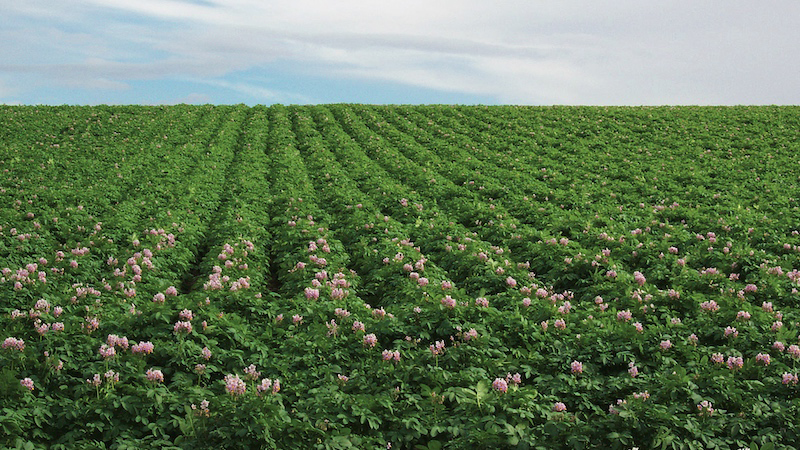New Solutions in Insect Control for Fruits

The editors of American Fruit Grower and Western Fruit Grower talked with Koen van den Eynde of Bayer CropScience; Jim Davis of Dow AgroSciences; Lars Swanson of DuPont Crop Protection; John Koenig of Syngenta Crop Protection; and Kevin Hammill of Valent U.S.A Corporation to get their insight into the insect control products of today and the future. Here’s what they had to say:
What is the biggest battle growers have with insect control?
Davis: The biggest challenge growers are currently facing is balancing the target pest pressure with the products available on the market. Growers need products that are soft on beneficials, but that offer control of the target pest in an economical way. Additionally, growers must become comfortable with new technologies as older chemistries are being phased out.
Van den Eynde: We find many growers are increasingly concerned with managing resistance. At Bayer CropScience we strive to provide new and innovative solutions, including new classes of chemistry to manage resistance and maintain existing chemistries. For instance, Bayer has recently developed Movento and Oberon insecticides, both from a new Bayer-exclusive class of chemistry known as Lipid Biosynthesis Inhibitors or LBIs and both much needed new tools to help growers manage resistance.
Hammill: Constantly evolving pest pressures, insect resistance to insecticides, and insect-vectored diseases.
Koenig: In general, the biggest challenge facing growers I believe is selecting the right tools to do the job in a cost-effective manner while meeting federal and local regulations. And increasingly growers must consider regulations of the countries to which they might export, specifically MRLs.
MRLs are similar to or exactly the same as tolerances that we set for pesticide products in the U.S., so an MRL is a maximum residue limit that can be of any pesticide residue on a commodity that is going to be shipped overseas, and many countries have their own regulatory systems that specify what those maximum residue limits can be.
A second battle that growers continue to have is dealing with particularly problematic pests, and that can be due to their ability to either cause serious damage, transmit plant pathogens or develop insecticide resistance. And a few examples of pests that would meet one or more of those criteria would include things like the codling moth in pome fruit, and the diamondback moth, whitefly, and thrips in vegetable crops.
When developing insecticides, what are the key attributes you’re looking for?
Hammill: A couple of key attributes include efficacy, especially against hard-to-control and invasive and evolving pests, and worker and environmental safety, including safety to beneficial insects, such as bees.
Swanson: At DuPont Crop Protection, we’re looking for products that provide long-lasting, consistent control of a number of key pests on a lot of different crops at low-use rates. When doing research for a new insecticide, we look for three things: a high level of biological activity, an excellent environmental profile, and a new mode of action.
Koenig: From a technical standpoint, performance and efficacy on key pests including both knockdown and residual control is a key attribute we look for when developing products. New products should also represent an improvement over existing standards.
Van Den Eynde: First and foremost, we look to fill needs within the marketplace. Next, we’re screening for levels of control, considering both pest spectrum and length of residual. Beyond that, we look for materials that will fit with sustainable agriculture, including resistance management and integrated pest management programs, as well as meeting all regulatory requirements.
Davis: Dow AgroSciences is looking to develop crop protection products that have an environmentally soft profile, or a greener chemistry. It’s important to develop products that control key pests while maintaining populations of beneficial insects. In developing pest management solutions, we want products that have the appropriate level of selectivity.
What do growers need to do to minimize resistance issues?
Van Den Eynde: We remind growers to respect the basic resistance management guidelines: Apply products at labeled rates, do not exceed the maximum number of applications, alternate or rotate different modes of action, apply products preventively rather than curatively. Also, be sure to read and follow label instructions, as some brands have specific guidelines to help preserve their long-term efficacy.
Swanson: Two key things growers can do to minimize resistance is to rotate products that offer different modes of action and continually integrate products that provide a new mode of action.
Hammill: Rotate classes of chemistry, and follow the IRAC guidelines. Valent products are labeled with stewardship and resistance management in mind. Always follow label guidelines on treatment rates, frequency, and number of applications per year. Alternate or mix compatible crop protection products with different modes of action. Our website lists target site mode of action classifications for all Valent insecticides.
Davis: Avoiding confusion is an important facet of minimizing resistance issues. There are a lot of new products currently on the market; however, many of these new compounds share the same chemistry.
For example, Dow AgroSciences recently developed Delegate WG and Radiant SC insecticides, which are the only products with the unique spinetoram class of chemistry. These products need to be rotated with other chemistries to remain feasible for long-term usage. Burning out a product early in its life cycle is going to remove that tool from the producer’s toolbox. Keeping products like Delegate WG and Radiant SC viable will benefit growers in the long-term.
If they are uncertain of the chemistry classes they are using, growers should always check product labels or work with consultants or advisers for the latest developments. We also encourage growers to follow IRM and IPM guidelines to avoid pest resistance.
Koenig: The simplest thing growers can do is to follow the resistance management guidelines that are found on insecticide labels, and most importantly that means not relying repeatedly on one class of chemistry, but instead to routinely rotate to other modes of action. And if they do that, they’ve accomplished the most important thing when it comes to resistance management.
What role does sustainability play in crop protection?
Hammill: It’s absolutely essential that we have sustainable crop protection and production methods globally to feed a growing world with finite land and water resources. Environmental harmony and food safety are crucial.
Davis: Sustainability has been a key factor in crop protection for a number of years. Growers tell us they want to be comfortable and confident with products, and trust that they will be viable options for a long time. Sustainability is critical to us. We don’t want to put products on the market that will be around for only four or five years. Dow AgroSciences develops products that are intended to help the industry for a long time — products that can be used for multiple generations of growers.
Swanson: Today, agricultural producers are looking for more than new chemicals to control pest problems. They want sustainable options that allow them to keep farming today — and in the future. DuPont researchers are using proprietary science to develop product attributes — at the early stages of product development — that offer an excellent environmental profile.
In specialty crops, where consumers demand high-quality produce, rapid and effective control of sucking and chewing insects is critical. At the same time, fruit and vegetable producers have become increasingly concerned about the insecticides they use on their crops, wanting to use the lowest rates possible, avoid affecting non-target species, and allow workers safely and quickly back into fields and orchards.
Van Den Eynde: Bayer CropScience believes strongly in its commitment to protecting tomorrow today through its sustainability efforts. We define sustainability as Economy, Ecology, and Society — all three must be fulfilled to be sustainable in the long run. Last year, Bayer committed $1.1 million dollars over four years to establish the Center for Global Produce Sustainability with the United Fresh Produce Association Research and Education Foundation. This Center will bring a strong focus to helping growers and food chain partners to proactively shape and influence the numerous developments driving enhanced sustainability in the produce supply chain.
Where do you see the crop protection industry headed in the future?
Davis: Manufacturers used to typically target a high percentage of pest control when developing products. Now, manufacturers are looking at the horizon and factoring in different issues, such as environmental impact. Additionally, growers will continue to see insecticides with a narrower spectrum of pest control. Fewer broad-spectrum products will be available, and new products will be designed for more targeted pest control.
Koenig: I think the crop protection industry will continue to be technology driven. For instance, I believe that GMO traits will eventually be introduced in specialty crops, especially vegetables. In addition to input traits — I think there will be an interest in developing output traits — things like better flavor, or increased nutritional value. And certainly there are going to be some challenges as we move ahead. As the global population grows, so will the worldwide demand for food, fuel, and fiber.
Hammill: Crop protection products are essential to food security, and helping growers to produce a safe, abundant, and economical food supply to feed a rapidly growing population. Valent is backed by a committed global leader in products for food, health, and the environment.
Swanson: Today’s dynamic agricultural marketplace requires a stronger focus than ever before on providing answers to changing customer needs. To meet these needs, DuPont is focusing its research and development efforts to improve productivity and bring more innovation and value to our customers faster than ever before, all while reducing commercialization costs and complexity.
Looking to the future, our crop protection research and development work is focused on the discovery and development of sustainable new products that advance agriculture to meet grower needs for long-term productivity and profitability. In the shorter term, we strive to support and renew our existing product line in a way that continues to provide new and exciting answers to today’s pest control issues.
Van Den Eynde: The world’s population is rapidly expanding. At the same time, modern consumers demand healthy, nutritious, and safe food supplies. Our challenge — and commitment — is to bring innovative technologies and value-added services to our grower customers and to help them to safeguard quality and marketability potential, and to increase productivity for greater return on investment.
Bayer CropScience is looking at integrated crop solutions rather than brand-specific approaches. In fact, our 2008 reorganization created specific crop teams charged with helping producers meet their local challenges in each crop market. In this way, we can help fine-tune management programs to minimize inputs while promoting greater return on grower investment.










